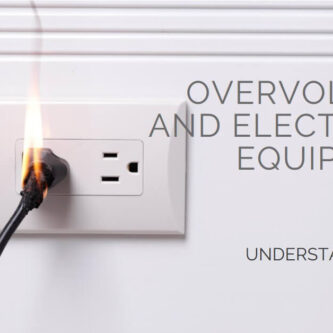Electrical tape is a common tool used to insulate electrical wires and protect against electric shock.
However, not everyone has access to electrical tape or may wonder if normal tape can be used instead.
No, normal tape should not be used instead of electrical tape when working with electrical systems.
Electrical tape is specifically designed to provide proper insulation and withstand electrical currents, while normal tape is not.
Using normal tape can be dangerous and potentially result in electrical shock, fire, or damage to electrical systems.
In this article, we’ll explore the differences between normal tape and electrical tape, when it’s okay to use normal tape, and how to use electrical tape properly.
Differences between Normal Tape and Electrical Tape
Normal tape and electrical tape have several key differences that make them suited for different purposes.
For one, electrical tape is made with special materials that make it strong, durable, and resistant to electrical conductivity.
Normal tape, on the other hand, is designed for everyday use and is not meant to withstand electrical currents.
Another key difference is the adhesive properties of the two types of tape. Electrical tape has a strong adhesive that can adhere to various surfaces, including rough or uneven surfaces.
This is important for ensuring that the tape stays in place and does not come loose over time. Normal tape may not have the same level of adhesive strength and may come loose more easily.
When to Use Electrical Tape
Electrical tape is an important tool for anyone working with electricity. It is designed to protect against electrical shock and ensure that wires are properly insulated.
Electrical tape is especially important when working with exposed wires or in situations where there is a risk of electrical current.
Some examples of when to use electrical tape include when splicing wires, repairing damaged cables, or insulating electrical cords.
Using electrical tape in these situations helps to prevent electrical shock, reduce the risk of fire, and keep electrical systems functioning properly.
Read also my comprehensive article Electric Tape Demystified: Understanding Voltage Capacity.
Risks of Using Normal Tape Instead of Electrical Tape
Using normal tape instead of electrical tape can be risky and potentially dangerous. Normal tape may not be strong enough to withstand electrical currents and may fail to properly insulate wires. This can result in electrical shock, fire, or damage to electrical systems.
In addition, normal tape may not have the same level of heat resistance as electrical tape. Electrical tape is designed to withstand high temperatures and can be used in situations where wires may become hot.
Normal tape may melt or come loose in these situations, further increasing the risk of electrical shock or fire.
When It’s Okay to Use Normal Tape
While electrical tape is the preferred choice for electrical work, there are some situations where normal tape can be used safely.
For example, if you need to temporarily cover exposed wires or seal a non-electrical item, normal tape may be sufficient.
However, it’s important to keep in mind that using normal tape in these situations is only a short-term solution.
If you are working with electrical systems, it’s always best to use electrical tape to ensure proper insulation and reduce the risk of electrical shock or fire.
How to Use Electrical Tape Properly
Using electrical tape properly is key to ensuring proper insulation and reducing the risk of electrical shock or fire. Here are some best practices for using electrical tape:
- Clean the area – Before applying electrical tape, make sure the area is clean and free of debris. This will ensure that the tape adheres properly and does not come loose over time.
- Stretch the tape – When wrapping wires with electrical tape, stretch the tape slightly as you apply it. This will help to ensure that the tape adheres tightly to the wire and creates a tight seal.
- Overlap the tape – When wrapping wires with electrical tape, overlap the tape slightly with each wrap. This will help to create a tight seal and ensure that the wire is properly insulated.
- Inspect the tape – After applying electrical tape, inspect it to make sure that it properly adheres and there are no gaps or tears. If you notice any issues, remove the tape and reapply it.
It’s essential to be aware of Why Electrical Tape is Not Enough for Exposed Wires read this article for more information.
Conclusion
In conclusion, while normal tape may be a suitable option for some situations, it’s important to use electrical tape when working with electrical systems.
Electrical tape is designed to withstand electrical currents, resist heat, and provide proper insulation.
Using normal tape instead of electrical tape can be dangerous and potentially result in electrical shock, fire, or damage to electrical systems.
Remember to use electrical tape properly by cleaning the area, stretching the tape, overlapping the tape, and inspecting the tape after application.
By following these guidelines, you can ensure the safe and effective use of electrical tape in all of your electrical projects.
you work With Electricity! Don’t leave empty-handed!
Looking to stay ahead of the game in the world of electrical engineering? Subscribe to my YouTube channel and gain access to exclusive content you won’t find anywhere else!
The staff I recommend (Amazon Affiliate Links to products I believe are high quality):
- Economy 120 Volt/60Hz AC Power Source – Step-Down Voltage & Frequency Converters 1800W
- UNI-T Digital Multimeter Tester UT139C
- 50-Amp Extension Cord for RV “100ft”
- Voltage Stabilizer 110/220v
- Hair Dryer “best selling“
- TOSHIBA EM131A5C-BS Countertop Microwave Ovens
Disclaimer: This contains affiliate links to Amazon products. I may earn a commission for purchases made through these links.


